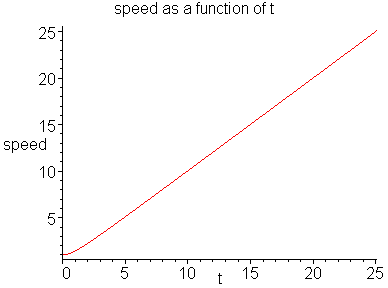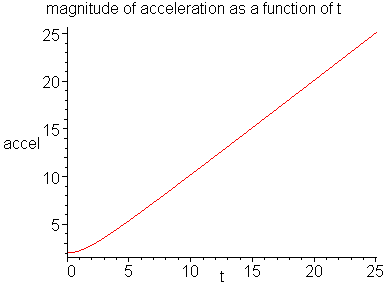Introduction
This experiment is aimed at verifying Newton’s second law of acceleration by investigating the acceleration of a glider on an air track acted on by an unstable force and evaluating the amount of work performed on the glider to change its kinetic energy. This experiment utilizes an air track first as an inclined plane with the slider accelerating due to gravity. Secondly, as a level surface with the slider accelerating due to the pull of an attached free-falling object of known mass. In both cases, the Work performed is calculated based on formulas for mechanical work and kinetic energy. The two results are compared. The first part yielded an average acceleration of 0.715 m/s2 (a 1.58% error) and the average result for the Work performed was 0.0204 N*m with only a 0.9% difference. The second part suffered critical errors due to improper data, and the results are not significant or useful.
Objectives
The objective of this experiment is to determine the acceleration of a glider on an air track acted on by an unstable force. We compare this to the value predicted by Newton’s second law and also evaluate the amount of work performed on the glider to change its kinetic energy.
Theory
The theory behind the experiment is based on Newton’s second law that states:
“an accelerating (a) object experiences a net force (F) that is directly proportional to its mass (m). F = m * a If that force causes an object’s displacement (d), then by definition a certain amount of work (W) has been performed”.
For motion in one dimension on an inclined plane, the expressions reduce with Θ being the angle of the incline.
W = F * d W = F * cos Θ * d
Additionally, the energy (K) associated with an object’s velocity (v) is defined as:
K = ½ m * v2
By starting with Newton’s second law, and using the definitions of work and kinetic energy, we can be show that the work done on an object will equal the change in kinetic energy of that object. W = ΔK Utilizing trigonometry, the equation W = ((m*g*h)/L)*d is used where (g) is the acceleration due to gravity.
Procedure
Two separate experiments were conducted. The first experiment involved a series of runs, whereby the acceleration of the mass of the entire moving system was kept constant while the net force applied was varied to cause a variable acceleration for every different run. This first experiment was aimed at finding the mass of the moving system and comparing it with direct measurement.
The second experiment was aimed at identifying the acceleration due to gravity while eliminating the effect of friction, and applying a statistical approach to the experimental data. The correct value of gravity acceleration was supposed to confirm the validity of Newton’s second law.
Data Analysis
The main objective of carrying out the experiment was to verify the relationship between net force and acceleration. This was achieved by keeping the mass of the body constant. This experiment ascertains the inverse proportionality of speed and mass over a constant net force. From the experiment conducted, we can clearly state that Newton’s second law of motion is true, as is indicated by the data obtained. It is observed that speed and net force are directly proportional if the mass is left constant. The speed of the truck increases as the net force, F increases. If the net force is constant, then acceleration is inversely proportional. Acceleration increases the mass of an object increases. The second part of the experiment indicates that any change in the net force has a more significant effect on the acceleration than the change in mass of the object. Therefore, the direction of the net force of the mass will be followed by acceleration.
Mass Kg | net force N | acceleration ms2 |
0.02 | 0.916 | 0.36 |
0.04 | 0.592 | 0.60 |
0.06 | 0.588 | 0.76
0.08 | 0.784 | 0.87 |
0.1 0 | 0.980 | 0.96 |
The relationship between the unstable force of the mass applied, and the resultant acceleration of the object is established by Newton’s second law of motion. It is observed that an unbalanced force acting on a mass produces speed that is parallel or in the direction of the force, and inversely proportional to the mass of the object. Force equals mass times acceleration, or F = ma. Therefore, a certain force will cause acceleration of an object of minimal mass more rapidly than it will on a large mass.

The stink’s speed increased as time passed by. This can be explained by the following expressions.
> a[x] := D( v[x]);
Ax: = t -2 sin (t) – t cos (t)
> a[y] := D( v[y]);
Ay: = t 2 cos (t) – t in (t)
To make a multiple plot of stinky’s x and y-accelerations, the plot below shows how the magnitude of stink’s acceleration changes with time.

Discussion
The second law on motion by Newton demonstrates that a force exerted on any object will cause it to move at an increasing speed. This speed is termed scientifically as Velocity. Speed is defined as a measure of the distance an object would move within a specified time that is determined. However, speed does not specify which direction the object takes as the case is with velocity. Velocity is therefore, a vector quantity while speed is a scalar quantity. In this experiment, we use both terms like velocity or acceleration and speed. Velocity is expressed above mathematically as the distance the object moves over time, d, divided by the time, t, it takes to move.
V = d / t
Acceleration occurs when an object speeds up, deceleration when it slows down or changes direction. The change in velocity of the cart measures the level of acceleration. Acceleration can be measured by calculating the velocity as it cannot be measured directly. Below is a representation of acceleration, a, which is calculated mathematically by dividing the difference between the two velocities by the time, t:
a = (V2 – V1) / t
Speed does not change when an object moves in a cycle. However, the objects direction of movement changes continuously, creating different tangent points if presented on a plane. The simple deduction on this phenomenon is that the object is continuously undergoing acceleration. Other mathematical disciplines and experiments have demonstrated the relationship that exist between velocity, V, and acceleration, a, in a system of circular movements that has a radius of r.
a = V2 / r
Conclusion
There is an assumption made by Newton’s Laws of Motion that objects can move freely without any opposing forces of friction which can hold them in place or slow them down. Newton’s Second Law mathematically states that the force, F, acting on an object is equal to the mass, m, of the object multiplied by its acceleration, a.
F = ma
Force is defined by Sir Newton as any obstacle or influence that hinders or changes the movement of the cart or object. This force can be either a push or pull acting on the object. He defines mass as the measure of the inertia within the object. There is always a certain level of difficulty when starting to push or pull a static object, or to bring the moving object to a halt. This is attributed to the level of inertia or mass of the object in question.
From the experiment, it was observed that a force, equivalent to the mass of the object in order to overcome friction, resulted in acceleration of the masses over a distance in the direction of that force. The amount of work done in moving the mass can then be attained from measurments of the acceleration, velocity and mass of the moving body. This verifies Newton’s second law of motion.